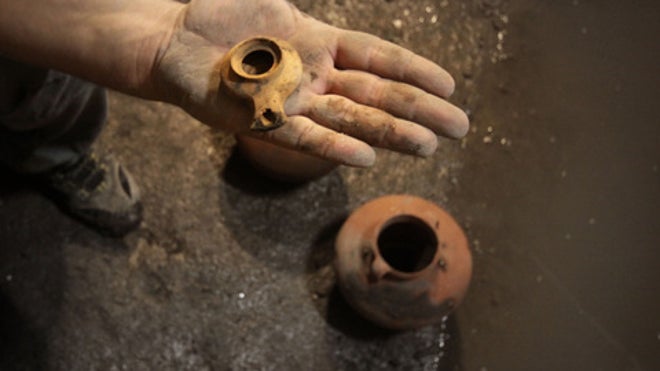In a similar vein, in the aerospace world, we use a tool/methodology called predictive analysis and can predict the future reliability of specific airplane parts using their past failure history, statistical analysis and some mechanical (material) properties. Through that, we can know the future with uncanny accuracy and avoid bad juju. It allows us to predict how many spare parts we need to have on our shelves and where to locate them throughout the world for quickest implementation after a failure. It saves hundreds of millions of dollars a year.
When it comes to history, my favorite historian is Josephus. Being Jewish, he understood the Jews. Being a Roman citizen, he understood their motivation for doing what they did. Rarely do you have a dual perspective when writing history; the victor always writes the book - and it is most likely not going to flatter the loser of the struggle. Josephus' description of the hell that the citizens of Jerusalem went through is beyond the pale. You would not wish it on your worst enemy. The Jews will suffer again as they are placed under siege for some period of time (not sure how long?) in the final 3.5 year struggle that we are under. We do know that there will be a struggle for survival as the opposing forces are chastised sorely. I was reading in Helaman 10 this morning about Nephi - who was able to implore the heavens due to his righteousness - and cause the affliction of his people who had become wicked. In like fashion, the two prophets will stay the heavens and do many things in the sight of the people and in the name of God. While the people of Nephi's day were able to repent and come back to their God (after they had tried to kill him, initially), the two prophets will eventually be overcome and will die for 3.5 days; only to be brought back to their feet by the return of our Lord on extreme morning of the First Resurrection.
Here is what it was like while the Jews were under siege the first time around (but had no "military" intervention from their Messiah, because they had already rejected and killed him). The Saints will be driven from location to location yet again, in a manner worse than they were in the Missouri days as we receive our final chastisement:
Traces of 2,000-year-old wartime famine unearthed in Jerusalem
By Megan GannonLiveScienceArchaeologists may have discovered evidence of a dire famine that gripped Jerusalem during a Roman siege nearly 2,000 years ago.
Cooking pots and a ceramic lamp were found in an ancient cistern near the Western Wall, the Israel Antiquities Authority (IAA) announced. Excavators believe these artifacts were left in the underground chamber by Jewish residents who were trying to eat what little food they had in secret during the war.
"This is the first time we are able to connect archaeological finds with the famine that occurred during the siege of Jerusalem at the time of the Great Revolt," Eli Shukron, excavation director for the IAA, said in a statement. The Great Revoltwas the first of several Jewish uprisings against Roman rule that began in A.D. 66. The revolt was ultimately unsuccessful. The Romans eventually took back Jerusalem from the Jewish rebels and destroyed much of the city, including the Second Temple.
"The complete cooking pots and ceramic oil lamp indicate that the people went down into the cistern where they secretly ate the food that was contained in the pots, without anyone seeing them, and this is consistent with the account provided by Josephus," Shukron added.
The historian Flavius Josephus provided the seminal account of the Romansiege of Jerusalem and the desperate hunger that accompanied it in his book "The Jewish War" (Simon & Brown, 2013). He wrote about how residents in the city concealed their food and ate in secret, fearing it would be stolen by the rebels.
"For as nowhere was there corn to be seen, men broke into the houses and ransacked them," Josephus wrote. "If they found some they maltreated the occupants for saying there was none; if they did not, they suspected them of having hidden it more carefully and tortured them."
Josephus added that many residents exchanged their possessions for small amounts of food that they took to secret parts of their home, "where some through extreme hungerate their grain as it was, others made bread, necessity and fear being their only guides. Nowhere was a table laid."
IAA officials said the artifacts will be on display next week in a study conference on the City of David organized by the Megalim Institute.
Copyright 2013 LiveScience, a TechMediaNetwork company. All rights reserved. This material may not be published, broadcast, rewritten or redistributed.
Read more: http://www.foxnews.com/science/2013/07/01/traces-wartime-famine-unearthed-in-jerusalem/?intcmp=features#ixzz2XpRfQtVB

No comments:
Post a Comment